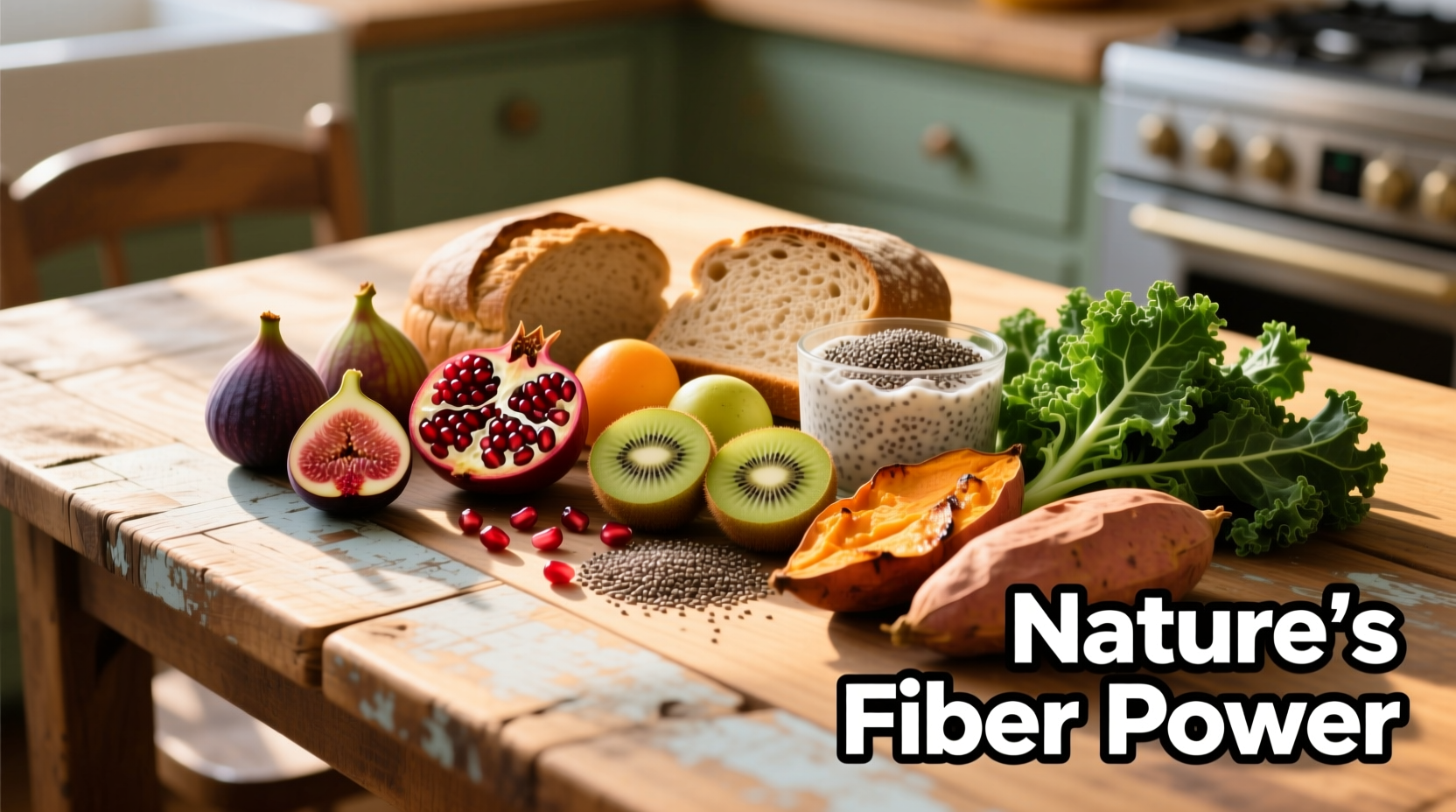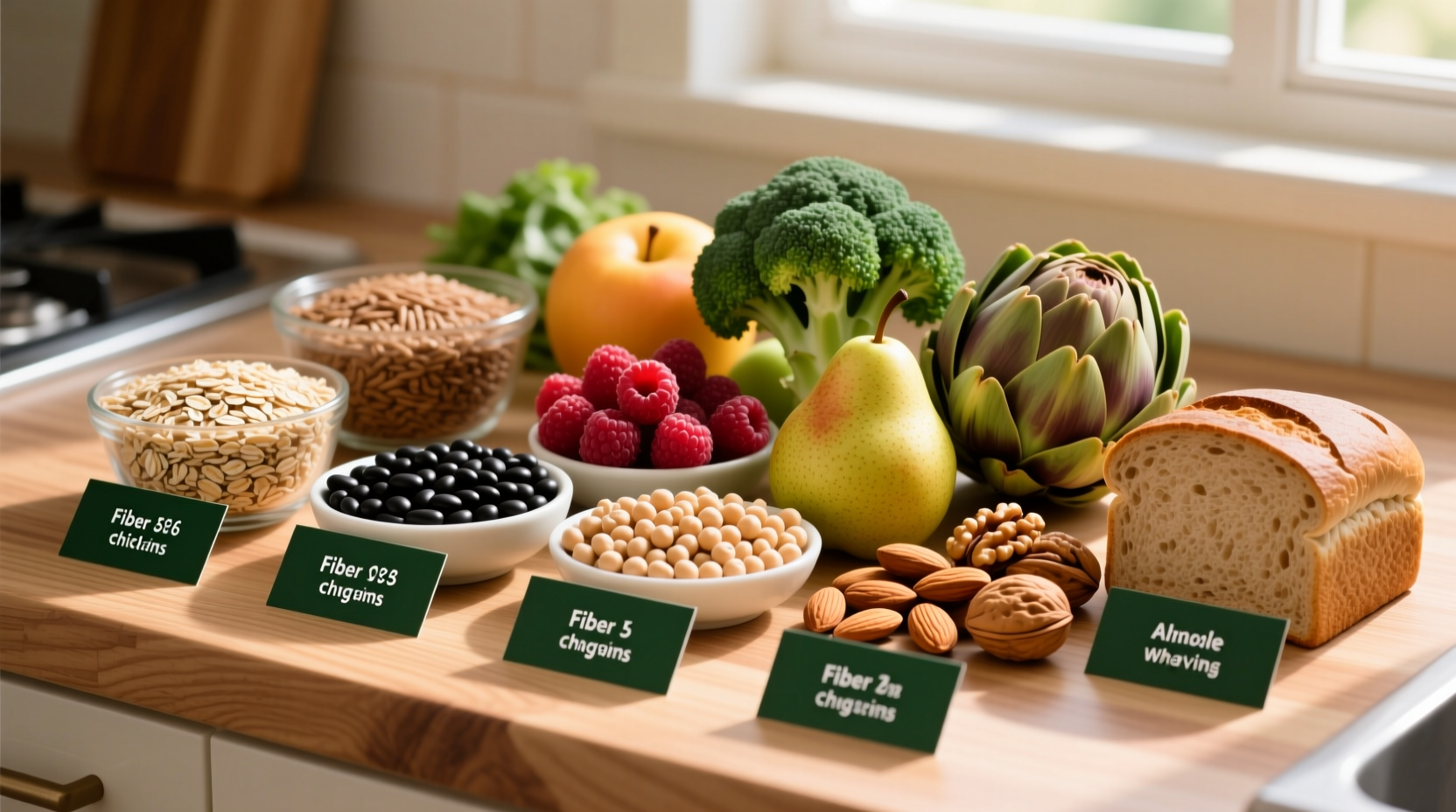Looking for high-fiber foods? Top choices include raspberries (8g per cup), lentils (15.6g per cooked cup), chia seeds (10g per ounce), and artichokes (10.3g each). Adults need 25-38g of fiber daily according to the National Academies of Sciences. This guide reveals 30+ high-fiber options with exact amounts per serving, plus practical ways to incorporate them into your diet.
Increasing your fiber intake is one of the simplest dietary changes with significant health benefits. Yet most adults consume only about 15g daily—less than half the recommended amount. Whether you're managing digestive issues, aiming for better heart health, or simply optimizing your nutrition, knowing exactly which foods deliver the most fiber is essential.
Why Fiber Matters: Beyond Digestion
Fiber isn't just for preventing constipation. Research from the American Heart Association shows that adequate fiber intake reduces heart disease risk by 24% and type 2 diabetes risk by 18%. Soluble fiber (found in oats, beans, and apples) helps manage cholesterol and blood sugar, while insoluble fiber (in whole grains and vegetables) promotes regular digestion.
The National Academies of Sciences established current fiber recommendations through decades of research. Their evolving guidelines reflect our growing understanding of fiber's role:
Fiber Recommendation Timeline
- 1970s: Dr. Denis Burkitt's research in Africa first linked high-fiber diets to lower disease rates
- 1997: Institute of Medicine establishes first official fiber recommendations (25g for women, 38g for men)
- 2002: USDA includes fiber recommendations in Dietary Guidelines for Americans
- 2020: Current guidelines refined to 25g for women under 50, 21g for women over 50, 38g for men under 50, 30g for men over 50
Top High-Fiber Foods by Category
When selecting high-fiber foods, focus on whole, minimally processed options. The USDA FoodData Central provides verified fiber content for thousands of foods. Here's what matters most for your daily intake:
Fruits Packed With Fiber
- Raspberries: 8g per cup (32% of daily needs)
- Pears: 5.5g each (with skin)
- Apples: 4.4g each (with skin)
- Bananas: 3.1g medium banana
- Avocados: 10g per half (technically a fruit!)
Vegetables That Deliver
- Artichokes: 10.3g each (globe variety)
- Green peas: 8.8g per cooked cup
- Broccoli: 5.1g per cooked cup
- Brussels sprouts: 4g per cooked cup
- Carrots: 3.6g per cooked cup
| Food | Serving Size | Total Fiber (g) | Soluble Fiber (g) | Insoluble Fiber (g) |
|---|---|---|---|---|
| Chia seeds | 1 ounce | 10.0 | 3.0 | 7.0 |
| Lentils | 1 cooked cup | 15.6 | 5.0 | 10.6 |
| Black beans | 1 cooked cup | 15.0 | 5.0 | 10.0 |
| Whole wheat pasta | 1 cooked cup | 6.3 | 1.5 | 4.8 |
| Almonds | 1 ounce | 3.5 | 0.5 | 3.0 |
Smart Ways to Increase Your Fiber Intake
Transitioning to a high-fiber diet requires strategy. Registered dietitians consistently recommend these evidence-based approaches:
Start Gradually to Avoid Discomfort
Ramping up too quickly causes gas and bloating. Increase by 5g daily over 4-6 weeks. Begin your day with a fiber boost:
- Add 2 tablespoons of chia seeds to your morning smoothie (+6g fiber)
- Choose whole grain cereal with at least 5g fiber per serving
- Include berries with your breakfast instead of lower-fiber fruits
Practical Swaps for Common Foods
Small changes make significant differences in your daily fiber count:
- Replace white rice with brown rice (+2g fiber per cup)
- Choose whole wheat bread instead of white (+2g per slice)
- Snack on air-popped popcorn instead of chips (+3.5g per 3 cups)
- Use lentils instead of ground beef in tacos (triple the fiber)

Avoiding Common Fiber Mistakes
Even with the best intentions, people make these fiber-related errors:
Not Drinking Enough Water
Fiber absorbs water in your digestive tract. Without adequate hydration, increased fiber can cause constipation rather than prevent it. Aim for 8 glasses of water daily when boosting fiber intake.
Relying Solely on Supplements
Fiber supplements lack the vitamins, minerals, and phytonutrients found in whole foods. The Mayo Clinic recommends getting fiber primarily from food sources for maximum health benefits.
Overlooking Portion Sizes
High-fiber foods still contain calories. A cup of cooked lentils has 230 calories along with 15g of fiber. Balance your portions to avoid unintentional weight gain while increasing fiber.
When to Adjust Your Fiber Approach
While high-fiber diets benefit most people, certain conditions require modification:
- IBS sufferers: May need to follow a low-FODMAP diet initially, then gradually reintroduce specific fibers
- After bowel surgery: Doctors often recommend temporarily reducing fiber during recovery
- Diverticulitis flare-ups: Liquid or low-fiber diet may be necessary until symptoms subside
Always consult your healthcare provider before making significant dietary changes if you have digestive conditions.
Building a High-Fiber Lifestyle
The most sustainable approach combines variety and consistency. Create a weekly meal plan that includes at least three high-fiber foods at each meal. Track your intake using apps like MyFitnessPal to ensure you're meeting your daily goals. Remember that the benefits of adequate fiber intake accumulate over time—consistent daily intake matters more than occasional high-fiber meals.











 浙公网安备
33010002000092号
浙公网安备
33010002000092号 浙B2-20120091-4
浙B2-20120091-4